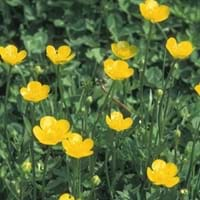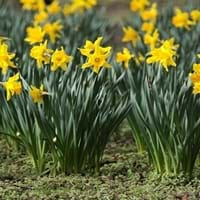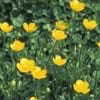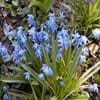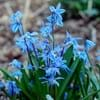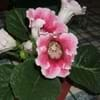Life Span
Perennial
Perennial
Type
Bulb or Corm or Tuber
Bulb or Corm or Tuber
Origin
Hybrid origin
Hybrid origin
Types
Not available
narcissus triandricus, narcissus poeticus
Number of Varieties
Not Available
Habitat
Banks, meadows, Roadsides, Shores of rivers or lakes
Hills, Humid climates, meadows
USDA Hardiness Zone
Not Available
4-9
Habit
Clump-Forming
Clump-Forming
Flower Color
White, Yellow, Red, Green
Yellow, Peach
Flower Color Modifier
Bicolor
Bicolor
Fruit Color
Not Available
Not Available
Leaf Color in Spring
Not Available
Green
Leaf Color in Summer
Light Green
Light Green
Leaf Color in Fall
Several shades of Green
Several shades of Green
Leaf Color in Winter
Light Green
Light Green
Leaf Shape
Lobed and toothed
Linear
Plant Season
Spring, Summer, Winter
Spring
Sunlight
Full Sun
Full Sun, Partial Sun
Type of Soil
Loam
Loam, Sand
The pH of Soil
Acidic, Neutral
Acidic, Neutral, Alkaline
Soil Drainage
Well drained
Well drained
Bloom Time
Not Available
Spring, Late Spring
Tolerances
Variety of soil types
Dry soil, Shallow soil
Where to Plant?
Ground
Container, Ground
How to Plant?
Divison, Seedlings
From bulbs, Transplanting
Plant Maintenance
Low
Medium
Watering Requirements
Average Water Needs
Do not let dry out between waterings, Never Over-water
In Summer
Lots of watering
Moderate
In Spring
Moderate
Less Watering
In Winter
Average Water
Less Watering
Soil pH
Acidic, Neutral
Acidic, Neutral, Alkaline
Soil Type
Loam
Loam, Sand
Soil Drainage Capacity
Well drained
Well drained
Sun Exposure
Full Sun
Full Sun, Partial Sun
Pruning
Remove damaged leaves, Remove dead branches, Remove dead flowers, Remove dead leaves
Do not prune during shooting season, No pruning needed
Fertilizers
All-Purpose Liquid Fertilizer
All-Purpose Liquid Fertilizer, as it is a flowering plant, use high phosphorous content fertilizer
Pests and Diseases
Powdery mildew
Caterpillars, Mites, Narcissus Basal Rot, Narcissus Bulb Fly, Viruses
Plant Tolerance
Variety of soil types
Light Frost
Flower Petal Number
Not Available
Single
Foliage Texture
Not Available
Medium
Foliage Sheen
Not Available
Matte
Attracts
Butterflies
Bees, Birds, Butterflies, Caterpillar, Leaf Hoppers
Allergy
Pollen
Diarrhea, Dizziness, Nausea, Vomiting, wheezing
Aesthetic Uses
Beautification, Cottage Garden, Ground Cover, Landscape Designing, Showy Purposes
Beautification, Bouquets, Decorating walls, Showy Purposes
Beauty Benefits
Not Available
Acne, Skin cleanser
Environmental Uses
Air purification
Provides ground cover
Medicinal Uses
Anodyne, Arthritis, Bronchitis, Nerve pain
Antiseptic, Antispasmodic, Fertility, Joint pain, Wounds
Part of Plant Used
Flowers, Leaves
Flowers, Leaves
Other Uses
Used as Ornamental plant
Beneficial species for attracting pollinators, Making Perfumes, Showy Purposes
Used As Indoor Plant
No
Sometimes
Used As Outdoor Plant
Yes
Yes
Garden Design
Bedding Plant, Container, Cutflower, Mixed Border
Container, Cutflower, Feature Plant, Foundation, Lawns and Turf, Mixed Border, Rock Garden / Wall
Botanical Name
Ranunculus acris
NARCISSUS 'Baby Moon'
Common Name
Ranunculus, meadow buttercup, tall buttercup, common buttercup, giant buttercup
Jonquil, Jonquilla
In Hindi
Ranunculus
नरगिस (फूल)
In German
Ranunkel
Narzissen
In French
Ranunculus
Narcissus
In Spanish
ranúnculo
Narcissus
In Greek
Ranunculus
Not Available
In Portuguese
Ranogkylos
Narcissus
In Polish
Ranogkylos
Narcyz
In Latin
Ranogkylos
Narcissus
Phylum
Magnoliophyta
Magnoliophyta
Class
Magnoliopsida
Liliopsida
Order
Ranunculales
Liliales
Family
Ranunculaceae
Amaryllidaceae
Genus
Ranunculus
Narcissus
Clade
Angiosperms, Eudicots
Monocotyledonous
Tribe
Ranunculeae
Not Available
Subfamily
Ranunculoideae
Lilioideae
Difference Between Ranunculus and Jonquil
If you are confused whether Ranunculus or Jonquil are same, here are some features about those plants to help you choose better. Many people think that these two plants have the same characteristics, but one can see Ranunculus and Jonquil Information and learn more about it. Fertilizers required for proper growth of Ranunculus are All-Purpose Liquid Fertilizer, whereas for Jonquil fertilizers required are All-Purpose Liquid Fertilizer and as it is a flowering plant, use high phosphorous content fertilizer. Hence, one should know the basic difference between Ranunculus and Jonquil if you are planning to have them in your garden to enhance its beauty.
<
Flowering PlantsImportance of Ranunculus and Jonquil
Want to have the most appropriate plant for your garden? You might want to know the importance of Ranunculus and Jonquil. Basically, these two plants vary in many aspects. Compare Ranunculus and Jonquil as they differ in many characteristics such as their life, care, benefits, facts, etc. Every gardener must at least have the slightest clue about the plants he wants to plant in his garden. Compare their benefits, which differ in many ways like facts and uses. The medicinal use of Ranunculus is Anodyne, Arthritis, Bronchitis and Nerve pain whereas of Jonquil is Antiseptic, Antispasmodic, Fertility, Joint pain and Wounds. Ranunculus has beauty benefits as follows: Not Available while Jonquil has beauty benefits as follows: Not Available.
Compare Facts of Ranunculus vs Jonquil
How to choose the best garden plant for your garden depending upon its facts? Here garden plant comparison will help you to solve this query. Compare the facts of Ranunculus vs Jonquil and know which one to choose. As garden plants have benefits and other uses, allergy is also a major drawback of plants for some people. Allergic reactions of Ranunculus are Pollen whereas of Jonquil have Diarrhea, Dizziness, Nausea, Vomiting and wheezing respectively. Having a fruit bearing plant in your garden can be a plus point of your garden. Ranunculus has no showy fruits and Jonquil has no showy fruits. Also Ranunculus is not flowering and Jonquil is not flowering . You can compare Ranunculus and Jonquil facts and facts of other plants too.
